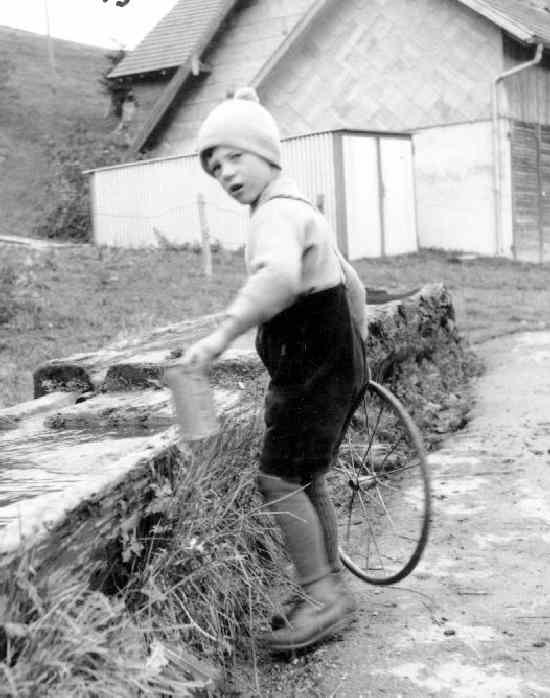
Figure 1.--This rural boy was photographed in the Black Forrest area about 1953, he looks to be about 8 years old. He wears long short pants, perhaps corduroys, with woolen long stockings.


Figure 1.--This rural boy was photographed in the Black Forrest area about 1953, he looks to be about 8 years old. He wears long short pants, perhaps corduroys, with woolen long stockings. |
This boy and his family is a good example of how rural children dressed in the Post-World war II era. He was photographed in the Black Forrest area about 1953. He looks to be about 8 years old. The boy has a stocking or watch cap with a playful pom. I'm not sure what color it was. He wears a sweater with long short pants, perhaps corduroys, and woolen long stockings. Note the suspenders (braces) that he wears over his sweater. His shoes are hightops which were still common in Germany during the early 1950s--especially in rural areas. In the early 1950s one or two dugout water basins still commonly stood in front of each farm house. Many of these farmers were very well to do, some even rich. Their clothes and their children's clothes wereoften very simple--but commonly sturdy.
This rural boy was photographed in the Black Forrest area about 1953. He looks to be about 8 years old.
The boy has a stocking or watch cap with a playful pom. I'm not sure what color it was. He wears a sweater with long short pants, perhaps corduroys, and woolen long stockings. The shorts are much longer than the short pants boys were wearing at the time in urban areas where kneesocks were also more common. A reader writes, "His mother has dressed him for warmth and he looks to be wearing long underwear under his long stockings." Note the suspenders (braces) that he wears over his sweater. His shoes are hightops which were still common in Germany during the early 1950s--especially in rural areas.
In the early 1950s one or two dugout water basins still commonly stood in front of each farm house. They had the cleanest and clearest water one can imagine. It was used by the acttle that past by every morning and evening during the summer. It was also used for drinking water. The basins were also a favorite play area for rural children. The basins were constantly fed with water from the family well located further up the mountain slope--one of th advantages of living in a mountanous area.
Many of these farmers were very well to do, some even rich. They often owned large tracts of land with old and precious silver firs (Abies alba). Unlike many urban families, they rarely made conspicuous displays of their wealth. Their clothes and their children's clothes were often very simple--but commonly sturdy.
Much of Germny's Black Forrest, known to the world through Hansel and Gretal, now suffers from the devestations of industrial pillution. This is the case of forrests throughout central Europe. Acidic waste gasses change the chemistry of the ground and affect the follage. Further damage is caused by heavy metals carried in more gaseous and liquid pollutants.
Related Pages:
[Return to the main Main German long stockings demographic chronology page]
[Return to the main Main German individual boy page]
[Knee socks]
[White knee socks]
[Long stockings]
[Striped socks]
[White stockings]
[Tights]
Navigate the Historic Boys' Clothing Web Site:
[Introduction]
[Activities]
[Biographies]
[Chronologies]
[Countries]
[Style Index]
[Bibliographies]
[Contributions]
[FAQs]
[Links]
[Glossaries]
[Satellite sites]
[Tools]
[Boys' Clothing Home]
